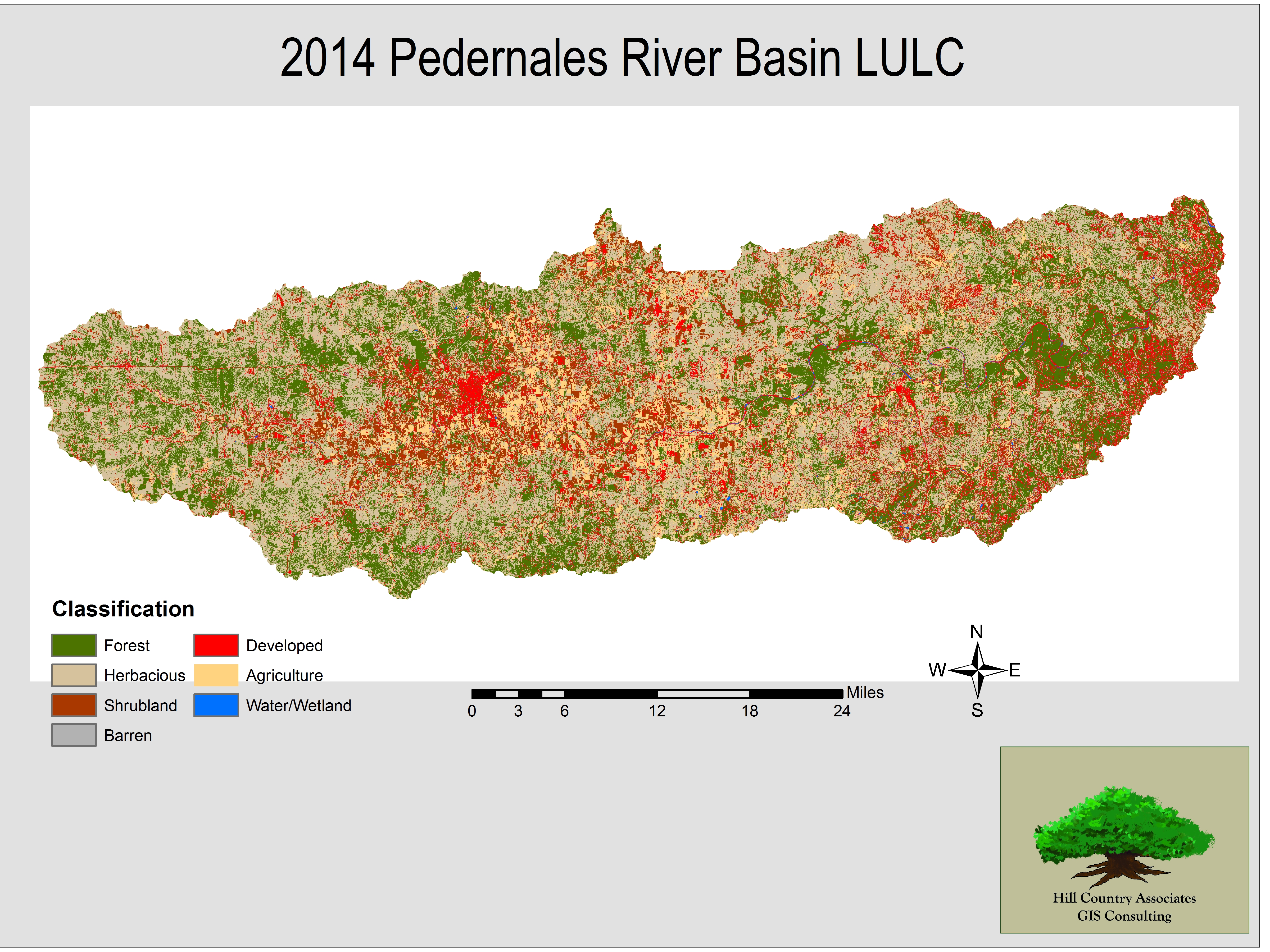

Summary
The Pedernales River Basin is an area of approximately 815,000 acres located in the central Texas Hill Country. The watershed overlays eight counties, with the majority of its coverage being over Blanco and Gillespie.The Pedernales, much like most rivers in central Texas, is prone to major fluctuation in water levels. For this reason, it is important to monitor the water quantity and quality of this area, as the river basin is an important resource to the Texas Hill Country providing a habitat for numerous fish and wildlife, supporting agricultural and ranching land, along with contributing to 23% of flow into Lake Travis, which is a critical source of drinking water for users downstream, such as the City of Austin (Texas Water Symposium, 2014). The purpose of this study is to take a look at and create maps of past and current land use and land cover (LULC) conditions in the Pedernales River Basin for the years of 1992, 2001, 2006, 2011, and create an updated 2014 LULC map. We will also take a look at population projections for the future of the Pedernales area. This is all done in order to gain valuable information on the Pedernales River Basin to help with the preservation of the Hill Country.
Purpose
The objective is to create a guide, independent of the internet, to be distributed to emergency response agencies within DeWitt County. The hand book will contain GIS information of facilities holding extremely hazardous substance (EHS) materials and hydrocarbons (H2S). The guide will include: maps and information on gate access, calculated safety zones with road block information, a list of contacts, notification procedures, a list of hydrocarbons (H2S) and other hazardous materials on the premises, and protective actions to be taken in the event of an emergency.
Methods
The first step of our project was to create NLCD shapefiles for our study region. We created these shapefiles by downloading the NLCD raster files from the MRLC for the years 1992, 2001, 2006, and 2011 and then running an extract by mask to our study area collected from TNRIS watersheds. The next step was to create change detection maps using the variety function in the cell statistics tool in ArcMap. This allowed us to compare change between the years 2001-2006, 2006-2011, and 2001-2011. Population projections were pulled from the Texas Water Development Board and transferred to excel to get an idea of future population in the area. To create a 2014 updated LULC shapefile we pulled images from LANDSAT 8. These images were then mosaicked and transferred to ERDAS Imagine. After this we ran a supervised classification by picking areas of known classification type and using these as training points for the program to classify the rest of the image. This image was then transferred back over to arcmap and clipped to the study region to create a final map. All maps were exported in KMZ format in order to be compatible with Hill Country Alliances website.
Conclusion
The main pattern to take away from this study is a decrease in forested areas and an increase in developed land. This information was most easily and reliably extracted from 2001-2011 due to the available LU/LC data. This coincides with what one might expect from a growing population. This project had several challenges in creating a 2014 update of LU/LC and throughout the semester we have learned that LU/LC classification is a very difficult and time consuming process. To accurately produce a LU/LC classification takes a highly trained and skilled team of remote sensing experts to analyze patterns and differentiate spectrally similar classes. NAIP imagery due to its high 1-meter resolution is very visually appealing however it is not appropriate for actual classification because it is not a multispectral image, for this reason 30-meter resolution is the highest resolution we were able to work with. What we have created is not a perfect classification but an approximation of land use in the Pedernales and should be viewed as such.

Pedernales River Basin Land Use/Land Cover